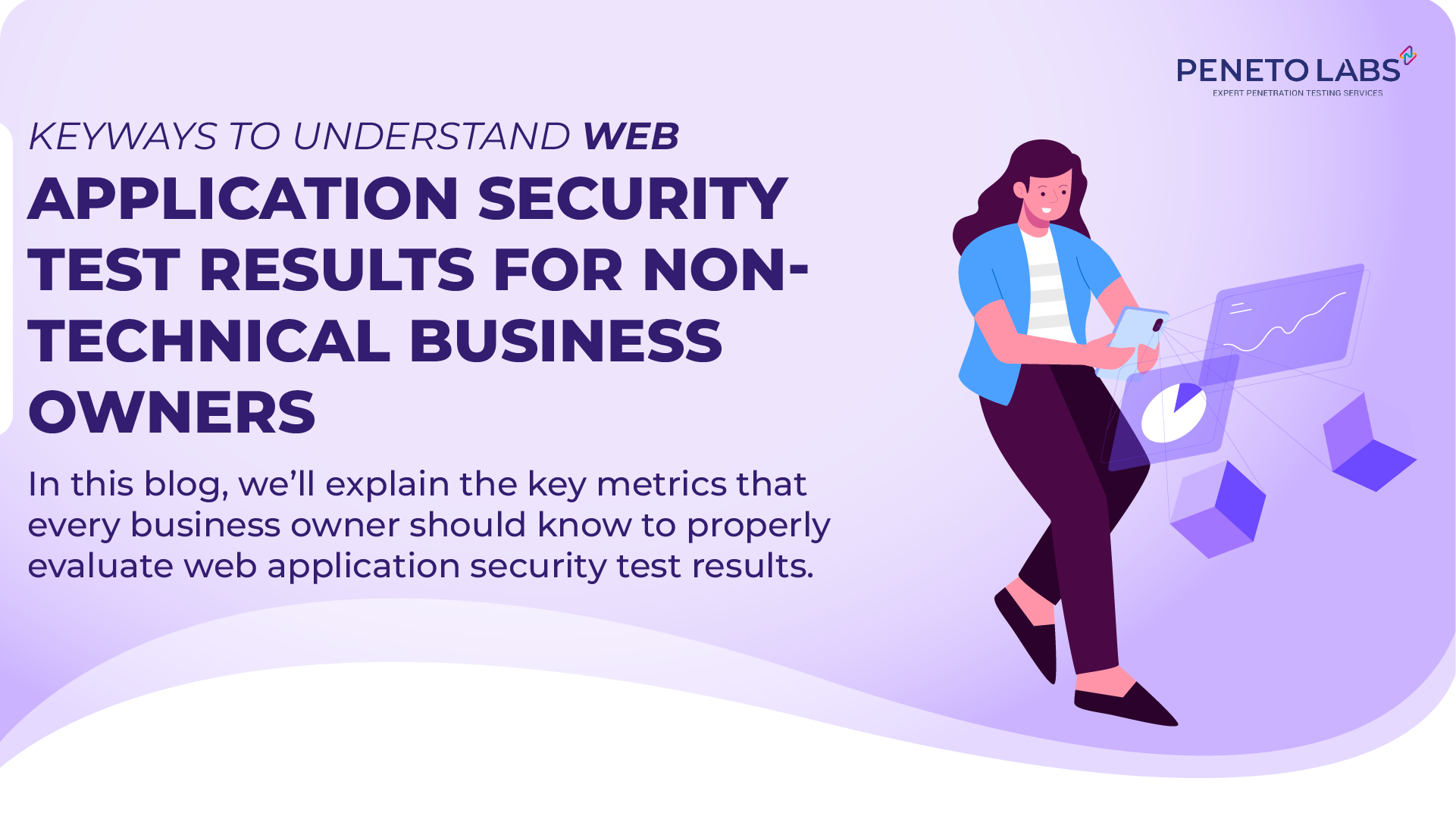Modern businesses rely heavily on web applications for daily operations, customer interaction, and data management. But as your web app grows, so does its exposure to cyber risks. That’s why Web Application Security Testing has become a must-have process for businesses across industries.
However, performing a test isn’t enough; understanding the results is equally crucial. In this blog, we’ll explain the key metrics that every business owner should know to properly evaluate web application security test results.
Why Evaluating Web Application Security Test Results Matters?
Many businesses think that running a vulnerability scan means they’re secure. But security testing is only valuable when you analyze and act on the results. Evaluating test results helps you:
- Identify the most critical vulnerabilities in your system.
- Prioritize which issues to fix first.
- Measure your security posture over time.
- Ensure your business meets compliance standards.
A clear understanding of test metrics helps your technical and management teams make informed security decisions.
Key Metrics to Evaluate Web Application Security Test Results
Let’s look at some of the most important metrics to track after completing a web application penetration test:
1. Vulnerability Severity Score
This is the most important metric. Each vulnerability discovered during the test is assigned to a severity score, usually based on the CVSS (Common Vulnerability Scoring System).
- Low severity: Minor flaws with little risk.
- Medium severity: Issues that could be exploited under certain conditions.
- High severity: Serious vulnerabilities that need immediate attention.
- Critical severity: Can lead to full system compromise or data breach.
Understanding these scores helps prioritize remediation based on risk impact.
2. Number of Vulnerabilities Detected
This shows the total number of weaknesses found in your web application. While a higher count doesn’t always mean poor security, it signals how well your app was built and maintained. Tracking this metric over time can help you see whether your security posture is improving after each test.
3. Exploitability of Vulnerabilities
Not every vulnerability can be easily exploited. Some may require advanced technical knowledge, while others are simple to attack. This metric helps identify which vulnerabilities attackers can realistically use to breach your system. A good security report separates theoretical risks from practical, exploitable ones.
4. Time to Remediate
This metric tracks how long your team takes to fix identified vulnerabilities. Fast remediation shows strong internal coordination and preparedness.
You can categorize this as:
- Immediate fixes (within 24–48 hours)
- Short-term fixes (within a week)
- Long-term fixes (within a month)
Reducing remediation time helps lower your overall exposure to cyber risks.
5. Re-Testing Success Rate
After fixing vulnerabilities, a re-test confirms whether those issues are truly resolved. The re-testing success rate shows the percentage of fixed vulnerabilities that no longer exist. A high success rate means your team is efficiently addressing and closing security gaps.
6. False Positive Rate
A false positive occurs when a vulnerability is reported but doesn’t actually exist. Tracking this metric ensures your security testing tools and methodologies are accurate. A lower false positive rate means your tests are more reliable and efficient.
7. Compliance Alignment Score
Every industry has its own security compliance requirements such as ISO 27001, PCI-DSS, HIPAA, or CERT-In in India. This metric shows how well your web application aligns with these standards. It’s an important measure for businesses that want to maintain regulatory trust and avoid penalties.
8. Risk Exposure Level
This gives a clear view of how exposed your application is to real-world cyber threats. It combines the number, severity, and exploitability of vulnerabilities. A lower risk of exposure level means your system is safer from potential attacks.
9. Business Impact Score
Cybersecurity is not only about technical risk; it’s also about business impact. This metric assesses how much financial or reputational damage a specific vulnerability can cause. It helps leadership teams understand which risks could disrupt business operations or customer trust.
How Can Businesses Use These Web Application Security Test Metrics Effectively?
Knowing the metrics is just the start. Here’s how to use them to strengthen your web security strategy:
- Prioritize high-risk vulnerabilities first.
- Set internal benchmarks for acceptable remediation time.
- Compare results from previous tests to measure improvement.
- Train your development team based on recurring issues.
- Work with certified experts to conduct regular web app penetration tests.
About Peneto Labs, a Professional Cybersecurity Company
At Peneto Labs, we help businesses identify real threats, interpret complex test results, and improve security posture with actionable insights. Peneto Labs has been empanelled by CERT-In to conduct information security auditing services. We believe no company should suffer from cyberattacks.
Our Web Application Penetration Testing services follow global standards like OWASP Top 10 and NIST Guidelines and focus on measurable outcomes, so you can make confident security decisions. When you hire us, we ensure high quality web application penetration testing, detailed reporting, and expert guidance.
Final Thoughts
Understanding and evaluating web application security test results is essential for any business that values data protection and customer trust. By tracking these key metrics, you can identify weaknesses early, strengthen your defenses, and stay compliant with industry standards.
Cybersecurity isn’t a one-time activity; it’s a continuous improvement process. The more you measure, the stronger and safer your business becomes. Book a FREE scoping call with us today and let us help you understand the security test results of your web application!
